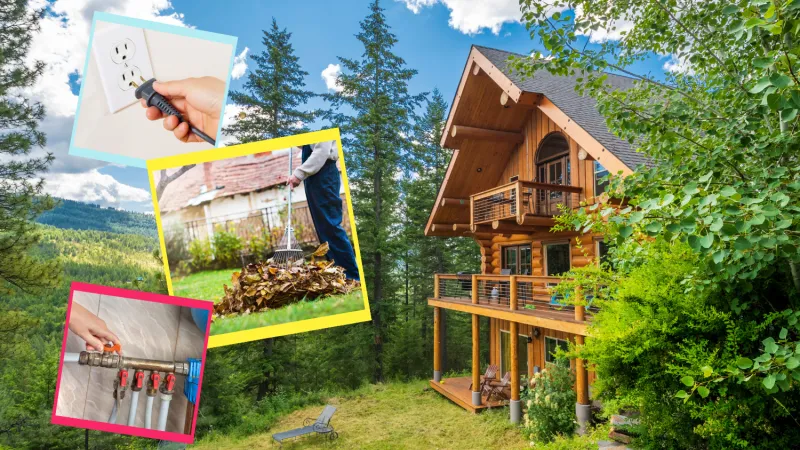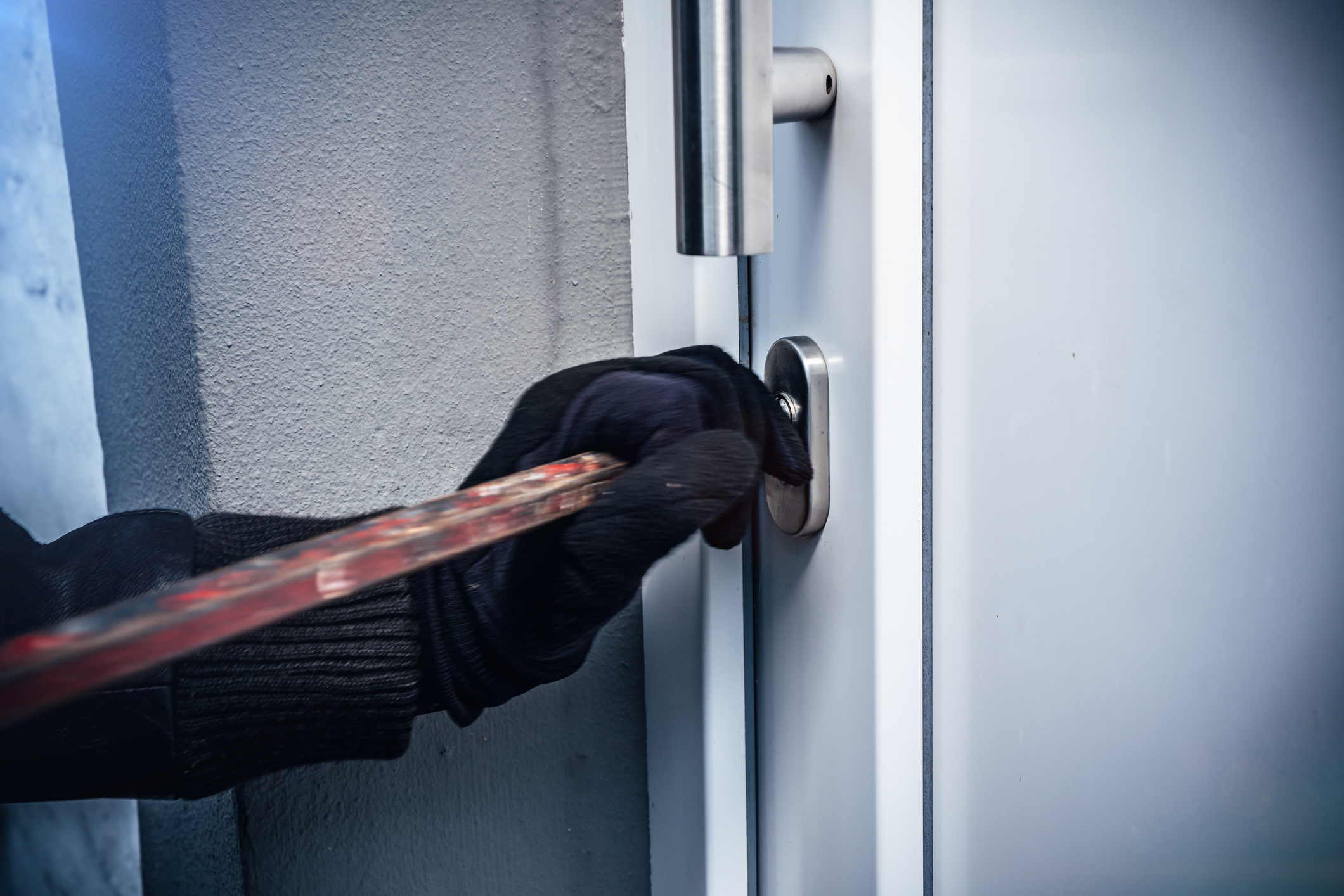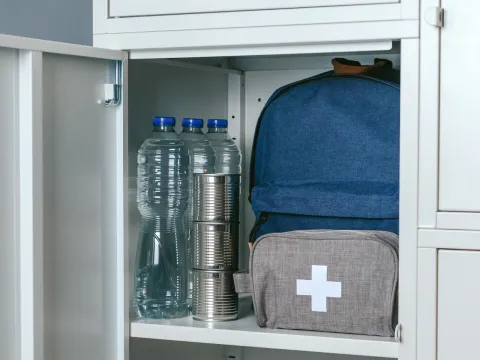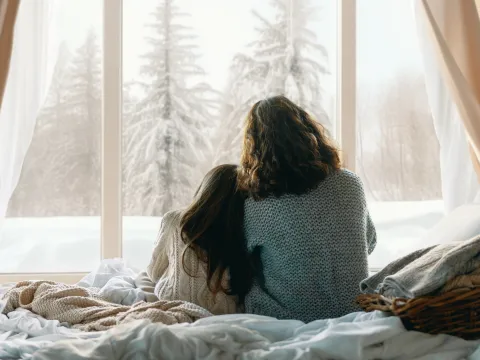
Winter-Ready and Insured: Protecting Your Cabin Haven Inside and Out
Many people consider the final days of fall to be the end of their cottage and lake season. Before temperatures dip into freezing, many cabin-goers focus on wrapping up seasonal projects and winterizing their cottage. While it’s a sad time to say goodbye to a loved vacation home for the year, there are certain tasks that will help you avoid floods, frozen and burst pipes, and more. Don’t let this process linger, we’re here to help! Here’s a quick list of things you should check on at the end of the season to avoid potential losses to your holiday home.
Plumbing
Prevent plumbing from freezing and bursting.
First thing: we recommend turning off the main water supply before doing anything else. If you need a hand with where to locate your main water switch valve, check out our article Why and How to Shut Your Water off When You Leave Home. Once this is turned off, you can drain all the supply lines and your hot water heater and then shut it off. There’s a valve for your hot water heater at the bottom of it, or if it’s electric, turning off the breaker will do the job. Next, open all taps (faucets, showers, tubs) and leave them open. When they’re left closed, pressure can build inside and cause a ruckus.
One thing people forget to do at the end of it all is empty fridge ice reserves and toilet water tanks. And trust us, you’ll regret it if you forget this step. If your water is shut off, you can just flush your toilet as many times as it takes to empty its water supply. Now that everything has been drained, pour one cup of antifreeze down every drain. And just like that, the hardest part is over! You’re well on your way to winterizing your cottage.
Electrical
Unplug as much as you can.
We’re talking appliances and electronics and flipping off unnecessary breakers can help prevent fires from starting. Here’s a small checklist to help you out:
- Space heaters
- Counter-top kitchen appliances like toasters, coffee makers, and air fryers
- TVs and entertainment systems
- Lamps and other spare lighting structures inside
- Deep freezes and fridges: Your fridge should be unplugged from the wall, with the water tube disconnected and drained into a pail
The best way to make sure you haven’t missed anything is to do a walk-around your cabin for all electrical outlets and making sure there isn’t anything plugged into any of them.
Sealing Things Up
Don’t invite in those unwanted forest guests.
No, we don’t mean Paul Bunyan. Mice, squirrels, and other rodents look for somewhere warm to live when the temperatures decrease in the fall. This is why it’s important not to leave any food or trash behind. They especially love Kleenex, toilet paper, and paper towels, so either tuck these away where they can’t access them or take it home. Lastly, do a thorough inspection of your cabin’s foundation and siding. Look for any holes, cracks, or gaps that a little creature could crawl through. Use caulk and seal them up before you take off for the year.
Rodents also love crumbs. Make sure to clean under those couches and cushions and wipe down everywhere that you store food. Cupboards, drawers, pantry, fridge shelves, and the freezer to name a few spots. While we’re on the subject of food, don’t leave any canned goods because they can freeze, too, causing them to burst, and then you’ve got a really nice mess to clean up in the spring.
Tidying Up
Clean your indoor and outdoor spaces.
While this may seem like common knowledge to deep clean, many forget to clear debris away from their exterior dryer vents, windows, air conditioning units, and gutters. If you can make your way on to the roof, clear leaves, cobwebs, and debris up there too before the snow falls.
Preventing Theft
Unfortunately, when fewer people are around, burglary and theft rates can rise.
Take important belongings home with you. It’s better to have items with sentimental value to you in a place where they can’t grow legs and walk away. While sheds are a great storage solution when you’re around, a small locker lock won’t stop thieves from breaking in. If you can, don’t leave anything of value outside. But you know, things still happen. If your area is prone to theft and curious neighbours, check out our blog, What To Do in Case of Vandalism to Your Home. Maybe installing some motion-sensing lights, cameras, or even a tall fence wouldn’t be such a bad idea.

Lock it Up
Lock those windows, doors, sheds, and bunk houses before you take off.
There’s nothing worse than driving away and thinking to yourself, “Did I lock the front door?” While you can follow all these tips to make sure your cabin is summer-ready for next year, the only way you can ensure total protection and lock it all up is with Cabin & Cottage insurance. This type of property insurance in Saskatchewan, Alberta, and Manitoba is delightfully simple and includes building, contents, premise liability, and detached private structures like boathouses, boat lifts, docks, and bunk houses. When you meet with a Sandbox insurance broker, you can even discuss adding optional coverage to your policy, like sewer backup, home systems protection, boats, boat motors, and more. Learn more about how you can protect your off-the-grid seasonal home on our Cabin & Cottage Insurance page.
Please note that the information in this article may not accurately reflect your insurance policy from Sandbox Mutual Insurance or another insurance company. Please refer to your policy or talk to your broker about your specific coverages.

FAQ'S
Do I really need to shut off the cabin’s main water supply before leaving for the winter?
Yes, 100%. Water likes to freeze when left unattended — and frozen pipes love to burst. Turning off the main water supply, draining the lines, and emptying tanks helps you avoid a springtime surprise of indoor skating rinks and expensive repairs.
Will my home insurance automatically cover my cabin too?
Not quite. A cabin, cottage, or vacation home needs its own policy to protect the building and all your belongings inside. With Sandbox’s Cabin & Cottage Insurance, you get tailored coverage for seasonal homes, detached structures like boathouses, and optional add-ons like sewer backup or boat coverage. One policy, one peaceful winter.
What should I do about all my electronics and appliances before closing up?
Unplug them! That includes fridges, TVs, space heaters — the whole gang. This reduces fire risk and stops power surges from damaging your electronics while you’re gone. Bonus points if you flip off non-essential breakers before you lock up and head out.



